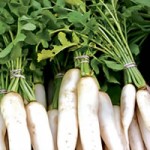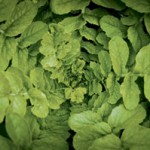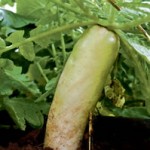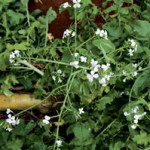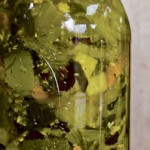New Rhythms At One Song Farm
One Song Farm is leaving its gardens in Moloa’a and setting up an organic, bio-intensive farm in Kalihiwai. Kumu Ania will be an educational center, with more than 150 Kaua’i-grown seeds, and will offer workshops about perennial leaf plants that complete a life cycle, from seed to seed.
“We’re moving into sub-tropical food sources, and understanding all the plants that actually want to live here,” says Lisa Fuller. “I’ve learned about plants through the market garden, and now I’m going to delve into the world of seed saving, which is where Sun lives.”
“People have to learn about what grows here,” says Sun. “Things like cabbage don’t go to seed here, but edible hibiscus, katuk and malunggay are highly nutritious plants that grow easily, and are quite palatable. For us to continue to promote temperate plants and foods that don’t make seeds is not sustainable.”
What’s Growing Now: Arugula, beets, cabbage, canasta lettuce, cilantro, daikon, green leaf lettuce, kale, radish, romaine lettuce, tat soi.
DAIKON
Native to Asia and a member of the cabbage family, daikon is a radish that is shaped like a carrot. In China they are cooked, while in Korea they are pickled. In Japan, they are enjoyed cooked, pickled and raw, as they are in India, Thailand, Vietnam, the Philippines and Malaysia.
Daikon sold in markets are up to 18 inches long, and weigh about 3 pounds. Left alone, they can grow up to 50 pounds. Also called Japanese or oriental radishes, domestic daikon have a white flesh that is juicy, and are hotter than red radishes.
Season: Daikon is a root vegetable that needs cool temperatures and short day lengths to flourish. Plants take 45 to 55 days to go from seed to vegetable.
What to look for: Look for well-shaped roots that are hard, solid and smooth. If the leaves are attached, they should be crisp and green.
Storage: Remove tops, because with them daikon will not keep as well. Placed in a plastic bag, they will store up to two weeks in the refrigerator.
Tip: The tops can be cooked like any other green or used in soups.
Preparation: Boiling and steaming will reduce spiciness. To retain crispness, do not overcook. Thin strips of daikon combine well with other vegetables and meats in stir-fries.
Daikon can be served in many of the same ways as cucumbers. Yogurt dressings and sweet-and-sour marinades make excellent accompaniments. For an attractive salad, combine grated daikon and carrots with dark sesame seed oil, and sprinkle with sesame seeds and cilantro.
Toss finely sliced daikon with orange sections, salt and a little lemon juice, serve with chicken or fish.
Health benefits: One 7-inch daikon has 61 calories, 5 grams of fiber, 2 grams of protein and 124 percent of the daily recommended value for vitamin C. Recent studies by the American Heart Association indicate that heart failure patients with low vitamin C levels are nearly twice as likely to die from cardiovascular disease within one year of follow-up. The data suggests that inflammatory pathways in heart failure patients may be why a vitamin C deficiency contributes to poor health outcomes.
One Song’s produce can be found at: One Song is in the process of moving, and Wednesday, April 25, will be their last day at the Kapa’a farmers market.
ONE SONG’S KAI
KIM CHI
Store-bought kim chi may not be as healthy as you’d like, since most commercially prepared varieties are made with white sugar and shrimp. Don’t fill the jars right up to the top, because the kim chi will expand as it ferments. Kim chi will continue to ferment while refrigerated, and will keep for at least a month.
* 6 pounds kai choi or other cabbage greens, chopped
* 2 pounds daikon, cut into half moons
* 1 pound carrots, cut into half moons
* 12 cups filtered water
* 6 tablespoons sea salt
Add salt to water and stir to dissolve. Mix veggies and layer in a 2-gallon crock. Press with fist or blunt tool to pack. Add saltwater to crock until veggies are covered. Place a weighted plate over, and cover with cloth. Top with lid, and soak for 24 hours in a cool, dark spot.
Next day: Drain veggies, and reserve brine. In a blender add:
* 6 ounces garlic
* 16 ounces onions, chopped
* 2 ounces yellow ginger, chopped
* 4 ounces turmeric, chopped
* 6 nioi, Hawaiian chili peppers
* 1 ounce sweet red pepper, remove seeds and chop
Blend into a thick paste and mix with drained veggies. Place back into crock, pressing until well-packed. Add enough of the reserved brine to cover veggies. Cover with weight, cloth and lid. Leave for at least seven days. Put kim chi into quart jars and cover with brine. Refrigerate or store in a dry, dark place.
- Lisa Fuller and Sun of One Song Farm are expanding. Daniel Lane photos
- Look for well-shaped roots
- Daikon leaves are delicious
- Daikon grow quite long
- Gone to seed. Daniel Lane photos
- One Song’s Kai Kim Chee


